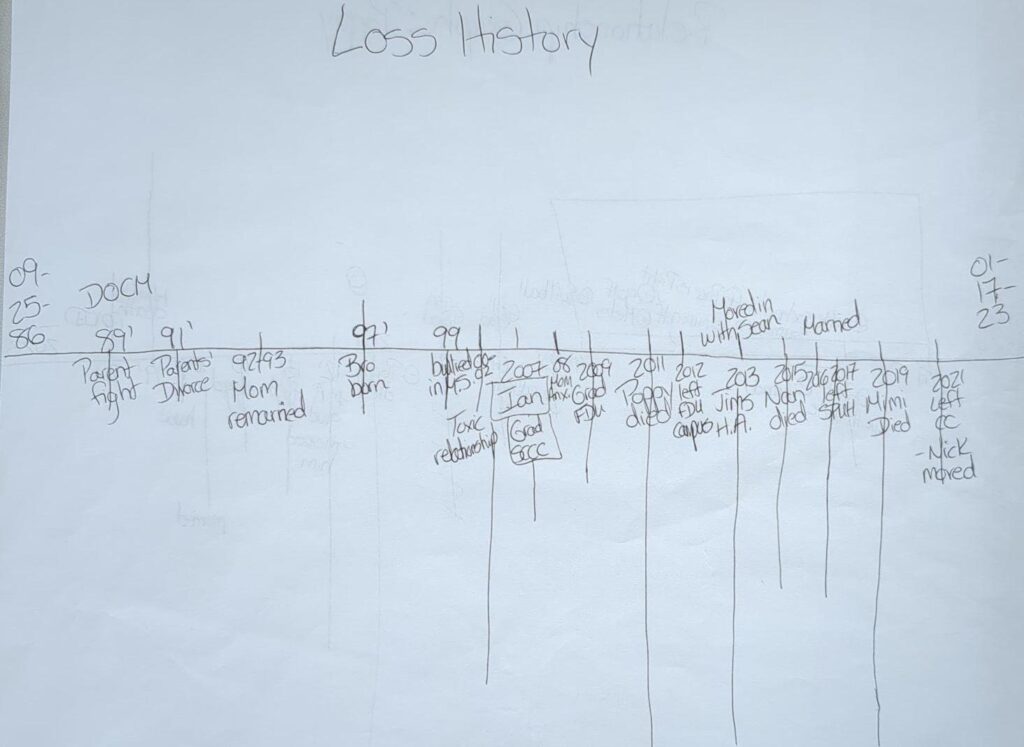Grief can feel like it knocks the wind out of you. But here’s the thing: you don’t have to navigate it alone. Enter the Grief Recovery Method. It’s not some fluffy, feel-good nonsense; it’s a straightforward, actionable approach to helping you or your clients heal. Let’s dive into how this method can help you reclaim your life.
In this interview-turned-blog-post, Miranda Barker, LICSW talks Jordan Mealey, a licensed professional counselor and clinic director from Ellie Mental Health- Central New Jersey location. Jordan is a Grief Recovery Specialist and trained in the Grief Recovery Method. Together, they delve into the nuances of grief recovery, offering invaluable insights into effective methods for helping individuals navigate the deeply personal and often challenging journey of grieving.
Listen to the podcast here:
Introduction to the Grief Recovery Method
“Grievers grieve at 100 percent and every griever grieves differently,” shares Jordan. She emphasizes the uniqueness of each person’s grief, shaped by their personal relationship and experiences with the loss. The Grief Recovery Method, a structured program designed to help individuals process and manage their grief, has proven to be an effective approach for many. It’s grounded in the belief that “grievers are not broken” and focuses on delivering tools for personal healing.
Key Components of the Grief Recovery Method
Understanding Emotional Communications
One of the central tenets of the Grief Recovery Method is addressing “incomplete emotional communications.” These are the unexpressed feelings and thoughts about the deceased or lost relationship that still linger and cause pain. Jordan explains that these can include “unmet expectations, unfulfilled wishes, and unresolved grief.” Addressing these can significantly aid in the healing process.
Searching for counseling while grieving? Find your nearest Ellie Mental Health here.
The Loss History Graph
A crucial assignment in the method is creating a Loss History Graph. This visual tool helps individuals document significant losses and changes throughout their lives. Jordan describes it as starting with the “dawn of conscious memory” and plotting key losses across a timeline. This exercise not only helps in visualizing one’s grief journey but also assists in identifying patterns and unresolved feelings.

Practical Steps for Therapists
Active Listening and Empathy
Jordan stress the importance of being a “heart with ears” for grieving clients, a concept that embodies deep empathy and active listening without judgment or unsolicited advice. “Listen with your heart, not with your head,” Jordan advises, highlighting the emotional nature of grief over intellectualizing or problem-solving.
Creating a Safe Space
Ensuring a safe, private, and comfortable environment for clients to express and work through their grief is paramount. Jordan recommends that therapists encourage clients to “sit for themselves and just feel and be in it,” taking necessary breaks without pressure.
Looking for tips for supporting kids that are grieving? Check out our blog post here about helping children navigate grief and loss.
Balancing Structure and Flexibility
While the Grief Recovery Method typically takes eight to ten weeks to complete, Jordan notes that it often extends to 12-14 weeks in practice. This flexibility allows clients to process at their own pace without feeling rushed.
Educate that Grief is not Linear
Elizabeth Kubler Ross’s “Five Stages of Grief” was actually created when she was researching dying. It was not meant to be applied to the typical person that is walking through loss.
Reinforce to your clients that grieving is not linear: You might not experience each of the famous “stages” and the grieving journey looks different.
Grief also does not have a time frame. Find out more about prolonged grief disorder by visiting this blog post.
Dealing with Immediate Grief in Therapy Sessions
When a client unexpectedly brings up a recent loss, it’s essential to provide immediate support. Instead of diving into the details of what happened, Jordan suggests focusing on emotional support: “How can I support you right now while you grieve?” This question can offer comfort and set the stage for a more involved exploration as the client is ready.
Common Missteps to Avoid
Jordan also discusses the many well-meaning but ultimately unhelpful phrases people often hear. Statements like “God only gives you as much as you can handle” or “There are other fish in the sea” can unintentionally invalidate the person’s grief. As therapists, being mindful of our language and ensuring it fosters validation rather than minimization is crucial.
Closing Thoughts
Grief is an inevitable part of life, but it doesn’t have to be navigated alone. As therapists, our role is to provide a compassionate, understanding presence and the right tools to help individuals find their path through grief. Jordan’s insights and the principles of the Grief Recovery Method serve as a valuable guide in this critical work.
“I just learned so many beautiful morals and values of what it is to be a selfless person and, loyal and loving,” Jordan reflects on his personal experiences, further emphasizing that the journey through grief, while challenging, can also lead to profound personal growth and understanding.
—
By understanding and implementing these techniques and perspectives, therapists can better support their clients through the often-painful journey of grief. For more detailed information and resources on the Grief Recovery Method, therapists can visit their official site and consider specialized training to enhance their practice.
Check out the full Youtube episode below.


